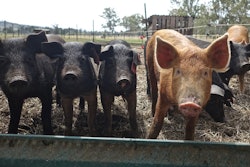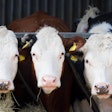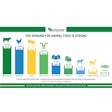Mycotoxins are found in most raw materials worldwide.
The annual BIOMIN Mycotoxin Survey indicates an increasing incidence of co-contamination, where more than one mycotoxin is found in each sample.
Mycotoxins have a direct and negative effect on reproductive performance in pigs, and mitigating these is essential in high-performing pig units.
Swine fertility has a significant effect on farm profitability and the number of pigs produced per sow per year is one of the factors that define production costs per pig. It is crucial to sustain high reproductive indices like litter size, number of farrowings per year and productive days.
Various parameters affect herd fertility, including:
- Management
- Genetics
- Nutrition
- Health
- Anti-nutritional factors
Mycotoxins are known anti-nutritional factors that affect reproduction and over 400 different mycotoxins have been identified to date. The most well-known are trichothecenes, zearalenone (ZEN), ochratoxins, aflatoxins, fumonisins and ergot alkaloids. Every raw material can be affected by more than one fungus, and each fungus can produce more than one mycotoxin, so it is highly likely that there will be more than one mycotoxin in any one feed ingredient (Figure 1).
This increases the chances that mycotoxins will interact and produce synergistic effects, which are of great concern for livestock health and productivity.
The Fusarium toxins deoxynivalenol (DON) and ZEN are a good example of co-contamination. These mycotoxins are mainly produced by F. graminearum, F. culmorum, and F. roseum (Tiemann and Dänicke, 2007).
To read the full report, click here.


















